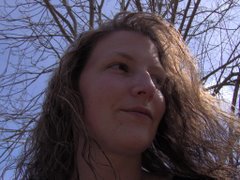
Lughnassadh or Lammas Arrives on August 1 or 2 or when the Sun is at 1 degree Leo.
LUGHNASSADH LORE
It is the first of the 3 Harvest Festivals celebrating the Earth releasing her bounty to us. Lammas is a contraction of the Anglo-Saxon words for "loaf mass": referring to the honor paid to the first loaf of bread made from the grain of the year's harvest.(1) Since the God was injured at Litha he begins to die in earnest during Lammas. The God sacrifices Himself to rebirth so that he comes back in the way of the harvest to feed his people throughout the upcoming winter. The God's sacrifice (not to be confused with many Christian beliefs that this involves crazy knife-wielding Priests. *giggle*) is sacred, its just a transfer of His energy. When we eat the bread made of the grain of His sacrifice - we are taking a part of him into ourselves...absorbing some of His energy. When we partake of the grain we serve multiple purposes in the Great Cycle of Life (1):
1) We honor the God by eating to survive, our very survival making His sacrifice more sacred.
2) We eat the "seed" of the God in the form of the grain - this will eventually result in magickal pregnancy that will allow the God to be reborn in the Spring.
3) We are taking into ourselves His qualities and responsibilities: We're making a type of oral contract to carry on His work of living in the service of life throughout a harsh Winter.
Therefore, the eating of the Lammas Bread is a sacred act; helping us to reconfirm the sacredness of life, death and rebirth (1).
The Celtics call this High Holy Day Lughnassadh. (LOONA-saad or Loo-NAS-aad). This refers to the games that, acording to folklore, the Celtic Sun God Lugh established in honor of his foster mother, Tailtiu(2). These were games of speed and strength: such as races, tosses, and wrestling. We don't know what the original motivation was, but it can be assumed that as the Gods strength began to wane as he died, a last show of strength was called for. Conversely some Celtics believe Lughnassadh celebrates the marriage of Lugh. In ancient Ireland, Lughnassadh was celebrated in Tell-Town (in what is now the Count Meath) and in 3 other locations, Emain acha in Ulster, Carman in Leinster, and at Tara.
Some folk tales tell us Lughnassadh was an occasion for the settling of legal and political matters, such as treaties, while the games and feasting were held. However in a poem preserved in a medieval manuscript, we learn that at Carmen, there weer prohibitions: deeds of violence, abductions, the repudiation of husband or wife, and the levying of debts. The penalties ascribed by this poem for violating those prohibitions were severe - "Whoever transgresses the law of the King Beren prescribed firmly for ever that he should not thrive in his tribe but should die for his mortal sins." (2)
Handfasting was an important part of the Lughnassadh celebration. This was an informal Hand-In-Fist - a marriage without a marriage that lasted a year and a day to the next Lughnassadh. If the bride became pregnant within that time then no wedding or more formal handfasting was required. If conception didn't occur than the formal wedding was held at the next Lughnassadh celebration. If the marriage was not to be re-newed or made more permanent the Bride and Groom would stand back to back facing North and South and walk away from each other. Such trial marriages were common in the 1500's. (2)
Some Traditions begin celebrations at Lammas-Tide (July 31). This is the Celebration of Freyr, the brother of the fertility and Moon Goddess Freya. There are many similarities in Freyr's lore as there are in Lugh's. Just like Lugh, Freyr had many skills as talents - He was said to have possessed a boat that not only could hold up the Gods, but which could also be folded up!
Almost all Pagans who celebrate this first harvest festival create or honor mounds. Corn and grain are often gathered in stooks, or tee-pee shaped bundles. Other crops are sometimes piles into traditional mounds. These can look like the burial mound, and so that is just as they represent - the death of the God and crops at the time of harvest. In the Wiccan Tradition, a grave is a womb, for the Earth is the body of the Goddess. From Her - we and the God - are reborn. Seeds and roots beget their own rebirth, from the Earth, to the Earth. (1) Mounds are also traditional entries to and from the Palaces of the Otherworlds, the land of Youth where the immortal Gods and Fae live. So, we can incorporate them into our rituals or celebrations.
Lammas-Tide is a mystical combination of waning Summer and impending Winter. Though the harvest has stated Summer is still here. But as we see it coming to an end we much hurry to enjoy the time left before the dark time.
References:
(1) Celebrating The Seasons of Life: Beltane to Mabon; by Ashleen O'Gaea ppg 99 - 103.
(2) The Solitary Druid: by Rev Robert Lee (Skip) Ellison ppg 145 - 149



No comments:
Post a Comment